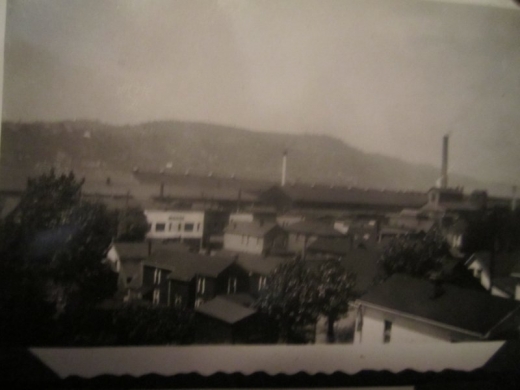The city of Follansbee began as a boomtown with the construction of the Follansbee Brothers Tin Mills between 1902-1904. In 1906 the town was chartered as the city of Follansbee. The Follansbee Brothers continued to expand and other factories and businesses moved to the city. The 1910 census recorded the town population as 2,031. By 1920 the population grew to 3,135, and between 1930 and 1960 the city census remained over four thousand persons residing in Follansbee. The census did not include the unincorporated areas surrounding the city.
The aerial and hillside photos of the city illustrate the remarkable prosperity and growth of Follansbee. The golden age of Follansbee occurred between the 1930s and 1960s including World War II, the Korean War, and Vietnam Conflict.




Sheet Metal factory at far right. Mahan School upper right.

Jefferson Glass factory, upper left.

Photo from Highland Avenue

Photo from Highland Avenue

Photo from Highland Avenue
Photo from Highland Avenue


Early photo of city before paved streets.

To see this picture in greater detail, first click on the image. Second, hold the Ctrl key down while using the scroller on your mouse. To bring computer screen back to normal, click out of the picture, hold down the Ctrl key and scroll in the opposite direction.
At the right, you see the river, the houses in front are on Virginia avenue. You can see the newly paved sidewalks there, those walks were paved after the 1913 flood. Prior to 1913 , the walks were made of wooden slats, which got washed away by the flood of 1913. This area is the block north of Raymond street, (the 1000 block). The big building on the left with 5 windows on the upper floor is the Grago Garage & the skating ring was upstairs. The north end of Follansbee Steel is in the middle of the (900 block). The Immediate front house is on Neville street, and behind that is Jefferson street. Description given by Joe Settimio.
*Photos courtesy of WV Archives, Tillie Meno, and Burgesttown Historical Society